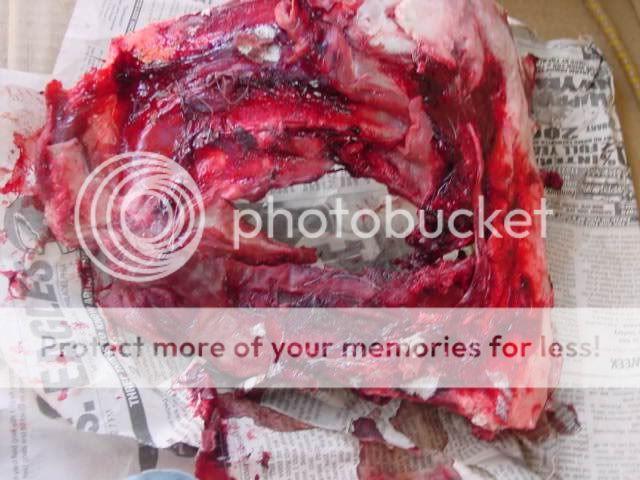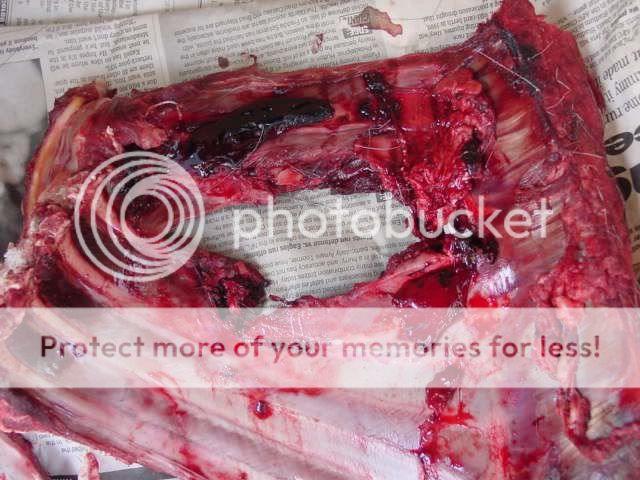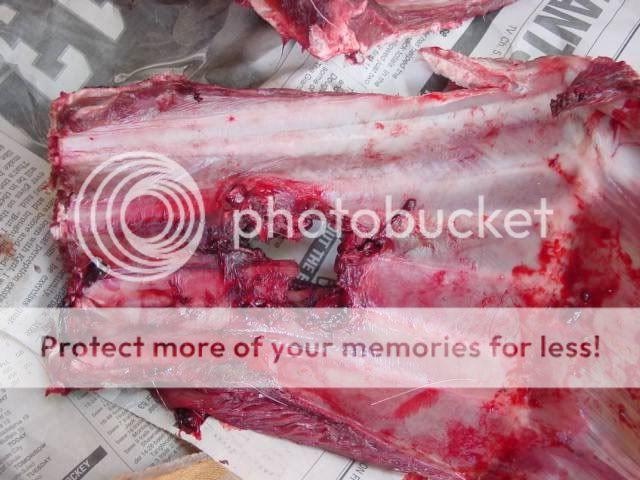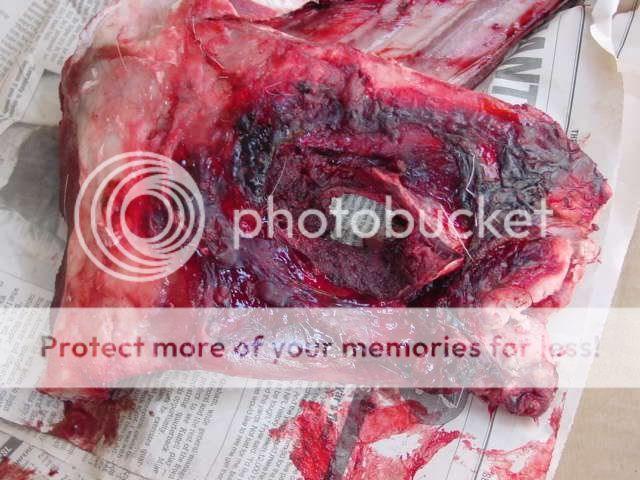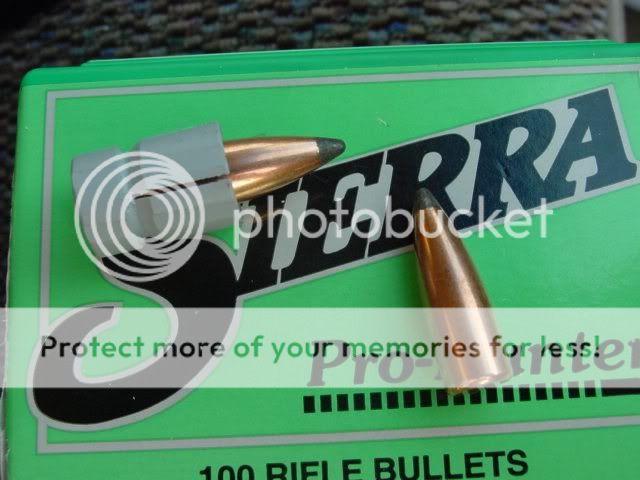L
Lightvarmint
Guest
Hello interested shooters,
Mr Henson shipped me some of the Generation II .338 265 grain aluminum tipped bullets for both instrumental testing and hydraulic testing.
First let me say that we decided not to perform the instrumental velocity BC testing on the 265gr HATS until after our hunting season(s) were over (in January) to allow us maximum time in the woods to collect hydraulic data at longer ranges.
We went about the load development of these bullets in the same fashion as we have in the past will all the bullets we have tested (ie GS customs, Lost Rivers, Sierras, Noslers, Swifts, Wildcats and Bergers). Specifically, we conduct a pressure test of the selected powder charges at -.030 off the lands and then slowly increase the powder charges until we reach the point that satisfies us and provides good brass life. We call this the -.030 pressure test.
After the pressure testing, we take that EXACT same powder charge and then test it for ACCURACY at -.030, -.040, -.050, -.060, and -.070 off the lands (with Davidson Ogive Tool and micrometer seating dies) and as a side note, we ALWAYS use a mirage shade to minimize mirage influences due to the barrel rejecting heat. So far in the many tests of all of the above bullets, a load or loads have surfaced that would allow the harmonics of the barrel to work in concert with the powder charges, cases, primers, bench equipment and shooter to yield tiny groups.
Note: when we identify a loading, we then shoot it several times to verify the results. Additionally, when a seating depth is identified, we then shoot it again along with bullets seated +.005 and -.005 from the identified seating depth and that will give us the range of the sweet spot so we can load for the center of it vice just the extreme edges. The final loading is tested for accuracy at 400 yards as well during the 400 yard zero process.
So, with the 265s, we settled on a loading that produced 3237 fps with velocity deviation of 6 fps on our Oehler equipment. Since we were comparing the max hunting load 265gr HAT trajectories to the max hunting load 300 SMK (2988.5 fps), we decided to set the 100 yard impact up at the exact same point as the 300 SMK to allow us to see the difference at 400 yards and beyond. What we found out was that we had to LOWER the impact point 4.7" at 400 yards to obtain a true 400 yard zero. AFTER we obtained the true 400 yard zero, we then shot at 600 yards just to get a mid range trajectory reference and got the pleasant suprise that the 265 HAT impact point was 1.4 moa (8.4") higher at 600 versus the 300 SMK. To us, this is significant in that we do not have the luxury to range, collect atmospheric data, compute, dial and then shoot. We typically only have the time (due to shorter windows to place shots) to range and hold for elelvations and/or windage prior to placing a shot. So with that being said it is important to us that we have the most ballistically friendly bullet available. Based on the trajectory information (ie., mid-range drop testing) and velocity, the HATS will have approximately 38.9 inches LESS drop with 3.6" less drift (with 90 degree agle 10 mph wind), approximately 465.6 ft-lbs MORE impact energy and approximately 309.6 fps MORE velocity at 1000 yards than our max 300 SMK hunting load.
Enough on the load development..........
We actually performed a CLOSE RANGE hydraulic test yesterday evening (with three minutes of legal shootime left) to verify that the bullet would not blow up with short range targets by taking one of our population control does and below is the rifle and target data:
.338 Lapua Improved on Hall Express Action barrelled by Carolina Precision Rifles, McMillan McHale Stock, Hart 1-10" twist barrel, Harrell muzzle brake, Jewell bottom safety trigger, .338 265 grain Henson Aluminum tipped bullet fired at a range of 202 yards to the target with an elevation difference of 21 feet.
As before, we will not place gore photos on the net but here is a vivid description of the results of the shot:
Lung shot with a perfect small entrance hole, round 2" exit hole in the hide with about a perfectly round 3" to 3.5" hole in the actual body. Pieces of lung and other organ matter were launched 20 feet behind the deer. Additionally, the bushes were covered with thick covering of bloody mist. Deer went 20 yards and died. No evidence of fragmentation as the holes were very round in symmetry and there was only one exit hole in the hide.
Finally, some folks have scoffed at the idea of using our smallish deer to test these bullets, but I will remind you that the general concern in the feedback we have gotten is "will they expand properly" and since we are using specimens with minimal resistance, shooting smaller targets will provide us a safety margin when determining expansion in the forthcoming longer range hydraulic testing. When they expand in the smaller cross section specimens, then when one shoots a specimen with more cross section, the expansion will even be more significant and devastating.
As always, the deer was delivered to a processing facility who will process it for a needy family.
Hopefully we can get those longer range tests done that you guys are requesting. But in case we do not get a chance on a long range animal, there is always the long range phone book test. Thanks for your interest.
As always, contact me at [email protected] for testing questions and the bulletsmith at:
[email protected] (remember 2 t's in bullett) for orders and bullet information.
Lightvarmint
Mr Henson shipped me some of the Generation II .338 265 grain aluminum tipped bullets for both instrumental testing and hydraulic testing.
First let me say that we decided not to perform the instrumental velocity BC testing on the 265gr HATS until after our hunting season(s) were over (in January) to allow us maximum time in the woods to collect hydraulic data at longer ranges.
We went about the load development of these bullets in the same fashion as we have in the past will all the bullets we have tested (ie GS customs, Lost Rivers, Sierras, Noslers, Swifts, Wildcats and Bergers). Specifically, we conduct a pressure test of the selected powder charges at -.030 off the lands and then slowly increase the powder charges until we reach the point that satisfies us and provides good brass life. We call this the -.030 pressure test.
After the pressure testing, we take that EXACT same powder charge and then test it for ACCURACY at -.030, -.040, -.050, -.060, and -.070 off the lands (with Davidson Ogive Tool and micrometer seating dies) and as a side note, we ALWAYS use a mirage shade to minimize mirage influences due to the barrel rejecting heat. So far in the many tests of all of the above bullets, a load or loads have surfaced that would allow the harmonics of the barrel to work in concert with the powder charges, cases, primers, bench equipment and shooter to yield tiny groups.
Note: when we identify a loading, we then shoot it several times to verify the results. Additionally, when a seating depth is identified, we then shoot it again along with bullets seated +.005 and -.005 from the identified seating depth and that will give us the range of the sweet spot so we can load for the center of it vice just the extreme edges. The final loading is tested for accuracy at 400 yards as well during the 400 yard zero process.
So, with the 265s, we settled on a loading that produced 3237 fps with velocity deviation of 6 fps on our Oehler equipment. Since we were comparing the max hunting load 265gr HAT trajectories to the max hunting load 300 SMK (2988.5 fps), we decided to set the 100 yard impact up at the exact same point as the 300 SMK to allow us to see the difference at 400 yards and beyond. What we found out was that we had to LOWER the impact point 4.7" at 400 yards to obtain a true 400 yard zero. AFTER we obtained the true 400 yard zero, we then shot at 600 yards just to get a mid range trajectory reference and got the pleasant suprise that the 265 HAT impact point was 1.4 moa (8.4") higher at 600 versus the 300 SMK. To us, this is significant in that we do not have the luxury to range, collect atmospheric data, compute, dial and then shoot. We typically only have the time (due to shorter windows to place shots) to range and hold for elelvations and/or windage prior to placing a shot. So with that being said it is important to us that we have the most ballistically friendly bullet available. Based on the trajectory information (ie., mid-range drop testing) and velocity, the HATS will have approximately 38.9 inches LESS drop with 3.6" less drift (with 90 degree agle 10 mph wind), approximately 465.6 ft-lbs MORE impact energy and approximately 309.6 fps MORE velocity at 1000 yards than our max 300 SMK hunting load.
Enough on the load development..........
We actually performed a CLOSE RANGE hydraulic test yesterday evening (with three minutes of legal shootime left) to verify that the bullet would not blow up with short range targets by taking one of our population control does and below is the rifle and target data:
.338 Lapua Improved on Hall Express Action barrelled by Carolina Precision Rifles, McMillan McHale Stock, Hart 1-10" twist barrel, Harrell muzzle brake, Jewell bottom safety trigger, .338 265 grain Henson Aluminum tipped bullet fired at a range of 202 yards to the target with an elevation difference of 21 feet.
As before, we will not place gore photos on the net but here is a vivid description of the results of the shot:
Lung shot with a perfect small entrance hole, round 2" exit hole in the hide with about a perfectly round 3" to 3.5" hole in the actual body. Pieces of lung and other organ matter were launched 20 feet behind the deer. Additionally, the bushes were covered with thick covering of bloody mist. Deer went 20 yards and died. No evidence of fragmentation as the holes were very round in symmetry and there was only one exit hole in the hide.
Finally, some folks have scoffed at the idea of using our smallish deer to test these bullets, but I will remind you that the general concern in the feedback we have gotten is "will they expand properly" and since we are using specimens with minimal resistance, shooting smaller targets will provide us a safety margin when determining expansion in the forthcoming longer range hydraulic testing. When they expand in the smaller cross section specimens, then when one shoots a specimen with more cross section, the expansion will even be more significant and devastating.
As always, the deer was delivered to a processing facility who will process it for a needy family.
Hopefully we can get those longer range tests done that you guys are requesting. But in case we do not get a chance on a long range animal, there is always the long range phone book test. Thanks for your interest.
As always, contact me at [email protected] for testing questions and the bulletsmith at:
[email protected] (remember 2 t's in bullett) for orders and bullet information.
Lightvarmint

